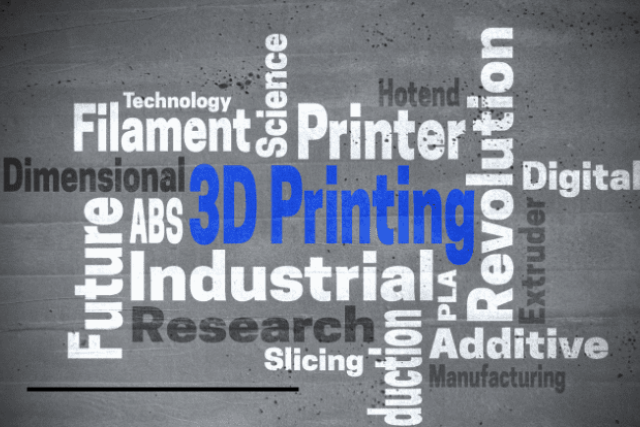Sustainability is becoming a key focus in Dubai’s fashion industry. With increasing environmental concerns, designers and brands are seeking innovative ways to reduce waste and promote eco-friendly practices.
3D printing is emerging as a transformative technology in this space. It helps create sustainable solutions that align with Dubai’s vision for a greener future. Here’s how 3D printing supports sustainable fashion initiatives in Dubai.
1. Minimizing Material Waste
One of the biggest advantages of 3D printing is its precision. Unlike traditional manufacturing methods, which often result in excess material, 3D printing uses only what is needed.
Each design is built layer by layer, ensuring minimal waste during production. This approach is particularly valuable for Dubai’s luxury fashion market, where intricate and custom designs are common. By reducing waste, 3D printing contributes to a more sustainable production process.
2. Promoting the Use of Recycled Materials
Dubai-based designers are experimenting with recycled materials for 3D printing. Plastic waste, such as used bottles, is being converted into filaments for creating fashion items.
This practice helps reduce landfill waste and promotes the circular economy. Fashion brands in Dubai are also exploring biodegradable materials, further reducing the environmental impact of their collections.
3. Reducing Carbon Footprint
Traditional fashion manufacturing involves global supply chains, which often result in significant carbon emissions. 3D printing, on the other hand, allows for localized production.
Dubai designers can create garments and accessories on-site, reducing the need for shipping and transportation. This localized approach minimizes the carbon footprint of the fashion industry. Additionally, 3D printing requires less energy compared to traditional production methods.
4. Enabling On-Demand Production
Fast fashion has led to overproduction and unsold inventory, contributing to environmental waste. 3D printing Dubai addresses this issue by enabling on-demand production.
Dubai-based fashion brands can produce items only when they are ordered. This eliminates excess inventory and ensures that resources are used efficiently. On-demand production aligns with the principles of sustainable fashion by reducing overconsumption.
5. Creating Durable and Long-Lasting Designs
3D-printed fashion items are known for their durability. Advanced materials and precision ensure that garments and accessories maintain their quality over time.
Dubai’s designers use 3D printing to create pieces that are both stylish and long-lasting. Durable designs reduce the need for frequent replacements, which supports sustainable consumption habits.
6. Supporting Customization and Waste Reduction
Customization is a hallmark of 3D printing. Designers in Dubai can create bespoke pieces tailored to individual clients. This customization minimizes waste by eliminating the need for mass production.
Clients receive exactly what they need, reducing the likelihood of unused or discarded items. Customized fashion also enhances customer satisfaction, making it a win-win for both sustainability and business.
7. Encouraging Innovation in Sustainable Materials
3D printing is driving innovation in the development of sustainable materials. Researchers and designers in Dubai are exploring eco-friendly alternatives to traditional fabrics.
For example, algae-based filaments, plant-based polymers, and biodegradable plastics are being used in 3D-printed fashion. These materials reduce reliance on non-renewable resources, supporting Dubai’s sustainability goals.
8. Enhancing the Circular Fashion Economy
The circular fashion economy aims to extend the lifecycle of fashion products. 3D printing contributes to this by making it easier to repair, repurpose, or recycle items.
Dubai-based designers can create modular fashion pieces with replaceable parts. When a component wears out, it can be reprinted instead of discarding the entire garment. This approach supports the reuse and recycling of materials, reducing overall waste.
9. Facilitating Sustainable Fashion Education
Dubai’s commitment to sustainability extends to education. Fashion schools and training centers in the city are incorporating 3D printing into their curriculums.
Aspiring designers learn how to use this technology to create eco-friendly collections. This knowledge equips the next generation of fashion professionals to prioritize sustainability in their work.
10. Showcasing Sustainable Fashion at Events
Dubai is known for hosting high-profile fashion events, such as Arab Fashion Week. Designers are using these platforms to showcase 3D-printed sustainable fashion.
Runway shows featuring eco-friendly collections inspire other designers and brands to adopt similar practices. These events also raise awareness about the benefits of 3D printing in sustainable fashion.
11. Reducing Water Usage
Traditional fabric dyeing and production processes consume large amounts of water, contributing to water scarcity. 3D printing eliminates the need for such processes.
Designers can create pre-colored filaments or use materials that don’t require additional dyeing. This significantly reduces water usage in the fashion production process.
12. Aligning with Dubai’s Sustainability Vision
Dubai has set ambitious goals for sustainability, including initiatives like the Dubai Clean Energy Strategy 2050. The fashion industry’s adoption of 3D printing aligns with these goals.
By embracing eco-friendly practices, Dubai’s fashion brands contribute to the city’s broader vision for a greener and more sustainable future.
Conclusion
3D printing is playing a vital role in supporting sustainable fashion initiatives in Dubai. From reducing waste and carbon emissions to promoting innovation in materials, this technology offers numerous benefits.
By enabling on-demand production and durable designs, 3D printing helps address the environmental challenges of traditional fashion. Dubai’s designers are at the forefront of this transformation, using 3D printing to redefine sustainability in the fashion industry.
As the technology continues to advance, it will further strengthen Dubai’s position as a leader in sustainable fashion. By integrating creativity, innovation, and eco-friendly practices, 3D printing is shaping a brighter future for the city’s fashion industry.
